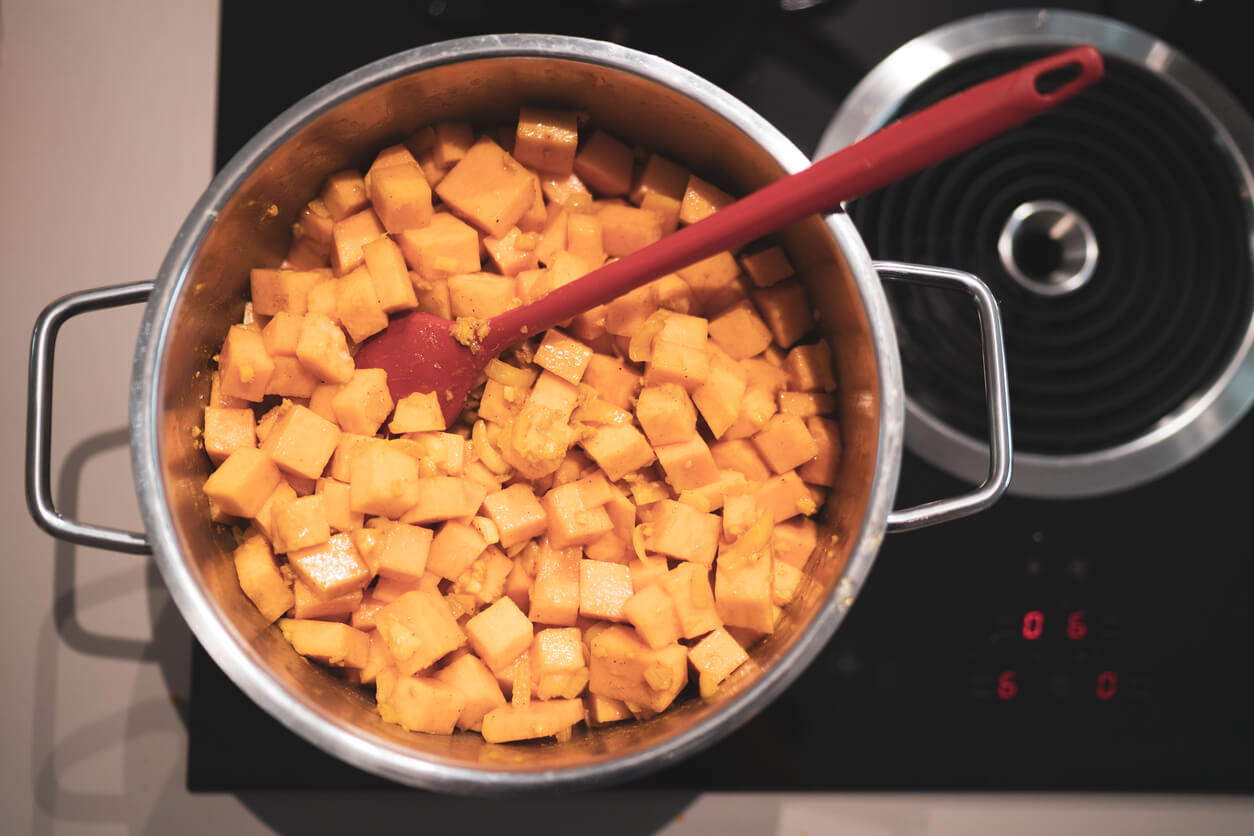
Cooking pumpkin for homemade canning
If your pumpkin patch is particularly prolific, you’re going to need a pumpkin preservation plan. Good thing they’re easy to store and preserve!
Freezing Pumpkins
The most convenient way to store pumpkin for future use is to purée it and then freeze it. Start off by thoroughly cleaning mature pumpkins with a firm rind. Then cut them open, scoop out the seeds and set those aside, and scrape out any remaining stringy pulp.
You need to cook the pumpkin until it’s soft. You can do this by cutting the pumpkin into chunks, leaving the rind on. Then you can bake it, boil it, or steam it. You can also cook it in a pressure cooker.
When the pumpkin flesh is soft, cool it slightly and then scrape it off the rind into a large bowl, preferably glass or metal. Put that bowl into a larger container of cold water to help the pumpkin cool faster.
Once your pumpkin has cooled, you can put it in a rigid freezer container, leaving a half inch of head space. You can also pack it into zip-style freezer bags. Squeeze out as much air as you can, and freeze flattened bags on trays until they’re solid. If you have a food sealer system, that’s ideal, since it removes the air that causes freezer burn.
Your other freezing option is to blanch cubed pumpkin. Cut your pumpkin into 1-inch cubes with the rind removed. Blanch the cubes in boiling water for about three minutes. Drain the cubes in a colander and pat them dry with a paper towel.
Spread pumpkin cubes on a waxed paper or parchment paper-lined baking sheet in a single layer. Freeze for at least four hours, then put the cubes into freezer bags. If you have more than one layer of pumpkin cubes, put a sheet of waxed paper in between. Squeeze out excess air and freeze flat.
Dehydrating Your Pumpkins
You can also dehydrate your harvested pumpkins. Start by washing your pumpkin. Cut it open, scoop out the seeds and set them aside, and remove any stringy pulp. Cut the pumpkin into 1-inch strips and cut away the rind. Cut the pumpkin pieces into strips about 1/8 inch thick. Blanch the strips in boiling water for a minute, or steam blanch them for 2 1/2 minutes.
Spread your pumpkin strips out in a food dehydrator for about 10 to 16 hours, or 10 to 18 hours at 300 degrees F in the oven. The dried pumpkin will be tough or brittle. Always be sure to check in on your pumpkin every couple of hours to make sure things are going as planned. Oven temperatures can vary, and you don’t want to wind up with burnt pumpkin!
Use your dried pumpkin for snacking, cooking, and baking.
Canning Your Pumpkins
If you want to can your pumpkins, the only safe way to do that is to pressure can cubed pumpkin. Do not try to use pressure canning or a boiling water bath to preserve pumpkin purée. There are no research-tested recipes for canning pumpkin purée; you run the risk of botulism, which can be deadly.
Canning is a time-honored preservation method—and one you should only pursue if you have the right equipment. You must be careful to follow all canning directions to the letter in order to avoid botulism in your canned goods. Check out our post in Food Gardening Daily that provides Pressure Canning Safety: 10 rules to live by.
How do you store your pumpkin harvest? Please tell us how you preserve your harvest by commenting below.


 Previous
Previous

